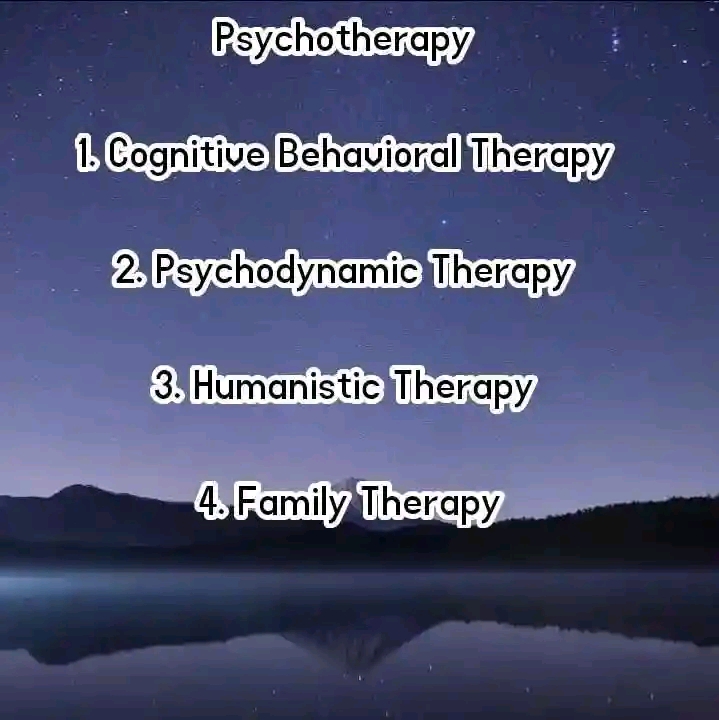Discussion on Psychodynamic and cognitive behavioural models
Discussion on Psychodynamic and cognitive behavioural models of supervision
DISCUSSION ON PSYCHODYNAMIC AND COGNITIVE BEHAVIORAL MODELS OF SUPERVISION.
PSYCHODYNAMIC SUPERVISION MODEL
Psychodynamic supervision draws on the clinical data inherent to theoretical orientation( e.g affective reactions , defense mechanisms, transference an countertransference e.t.c). This approach required the supervisee to undergo psychoanalysis so that the therapist would not be reactive to the client and hinder the therapeutic process. Although most training programmes do not formally require students to have personal experience with psychotherapy, it is highly encouraged.
In frequent instances students and supervisees are told that it feels very different in the client chair than in the therapists chair , and often what feels comfortable from the perspective of the therapist is not necessarily what feels comfortable or helpful from the clients perspective. Although it is possible to become a good therapist without having personal therapy experience , it is akin to expecting someone to become an exceptional basketball coach without ever having played the game - certainly possible but likely the exception.
Commenting on the parallels , between psychodynamic therapy and supervision ( Dewald ,1997 )noted that both processes need a solid alliance and the feeling of safety , as well as empathic understanding and attunement to the processes of transference and countertransference. Given the similarities , Dewald state that "If one were a skilled analyst , one would be able to do skilled supervision"(p.14). However, it is likely that just as good therapists do not necessarily make good clinical faculty members ,their ability to make good supervisors is also probably subject to individual differences.
Psychodynamic supervision is broadly classified into three categories depending upon the area of focus : patient-centered , supervisee-centered and supervisory-matrix-centered : Patient-centered began with Frued and , as the name implies , focuses the supervision sessions on the patients presentation and behaviours. The supervisors role is didactic , with the goal of helping the supervisee understand and treat the patients material .
The supervisor is seen as the uninvolved expert who has the knowledge and skills to assist the supervisee , thus giving the supervisor considerable authority (Frawley-ODea & Sarnat ,2001). Because the focus is on the patient and not on the supervisee or the supervisory process, very little conflict occurs between the supervisor and the supervisee , as long as they both interprete the theoretical orientation in the same way . This lack of conflict or stress in the supervision sessions often reduces the supervisees anxiety, making learning easier. Conversely, if conflict were to develop using this model , supervision could be impeded by not having a way to directly deal with it (Frawley-ODea & Sarnat).
Supervisee-centered psychodynamic supervision came into popularity in the 1950s, focusing on the content and process of the supervisees experience as a counselor (Frawley-ODea & Sarnat, 2001 : Falender & Shafranske , 2008). Process focuses on the supervisees resistances, anxieties and learning problems (Falender & Shafranske) . The supervisors role in this approach is still that of the authoritative , uninvolved expert(Frawley-ODea & Sarnat), but because the attention is shifted to the psychology of the supervisee , supervision utilizing this approach is more experiential than didactic (Falender & Shafranske).
This supervision was adopted to fit several psychodynamic theories , including Ego Psychology , Self Psychology and Object Relations (Frawley-ODea & Sarnat , 2001). Supervisee-centered supervision can stimulate growth for the supervisee as a result of gaining an understanding of his/her own psychological processes , but this same advantage can also be a limitation in that it makes the supervisee highly susceptible to stress under scrutiny.
Supervisory-matrix-centered opens up more material in supervision as it not only attends to material of the client and supervisee, but also introduces examination of the raltionship between the supervisor and supervisee. The supervisors role is no longer one of uninvolved expert. Supervision within this approach is relational and the supervisors role is to "participate in ,reflect upon, process enactments and interpret relational themes that arise within either the therapeutic or supervisory dyads" (Frawley-ODea & Sarnat , 2001, p.41).
This includes an examination of parallel process, which is defined as "the supervisees interaction with the supervisor that parallels the clients behaviour with the supervisee as the therapist" (Haynes, Corey , & Moulton , 2003).
COGNITIVE BEHAVIORAL SUPERVISION MODEL
As with psychodynamic supervision, cognitive- behavioural supervision infuses the supervision process with many of the techniques and theoretical concepts of the underlying theoretical orientation. (Padesky , 1996) asserted that the same processes and methods that characterize the cognitive behavioural therapy (CBT) process can be used to teach and supervise therapists (p.289), and noted that both therapy and supervision incorporate many similar activities such as goal setting, checking-in and eliciting feedback .
CBT oriented supervisors typically negotiate an agenda with the supervisee at the beginning of each session and continuosly assess and monitor the supervisees progress. Behavioral practice may be stressed during both counselling and supervision sessions, including through such means as behavioral rehearsals and role playing . CBT-focused supervisors rely heavily on Socratic questioning and challenging the supervisees misconceptions.
Other areas of focus include establishing a strong working relationship, skill analysis and assessment ; setting supervision goals and strategizing and implementing methods to achieve the goals ; follow-up evaluation and generalization of learning ; and at times assigning homework to the supervisee (e.g, Liese & Beck , 1997 : Rosenbaum and Ronen , 1998). Cognitive behavioural supervision also emphasizes the use of the trainees observable cognitions and behaviors , especially regarding reactions to the client (Hayes et al., 2003).
REFERENCES
Marquette University https.//www.marquette.edu
Falender, C.A , & Shafranske , E.P. (2004). Clinical Supervision: A competency-bases approach. Washington , DC : American Psychological Association.
Haynes, R. , Corey , G., & Moulton P., (2003). Clinical supervision in the helping professions : A practical guide. Pacific Grove , CA : Brooks/Cole.
Liese, B.S , & Beck, J.S. (1997). Cognitive therapy supervision. In C.E Watkins, Jr. (Ed.), Handbook of Psychotherapy Supervision (pp. 114-133). New York: John Wiley & Sons
Frawley-ODea , M.G. and Sarnat , J.E. (2001) The Supervisory Relationship : A Contemporary Psychodynamic Approach . Guilford Press , New York.





















